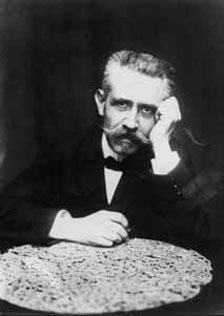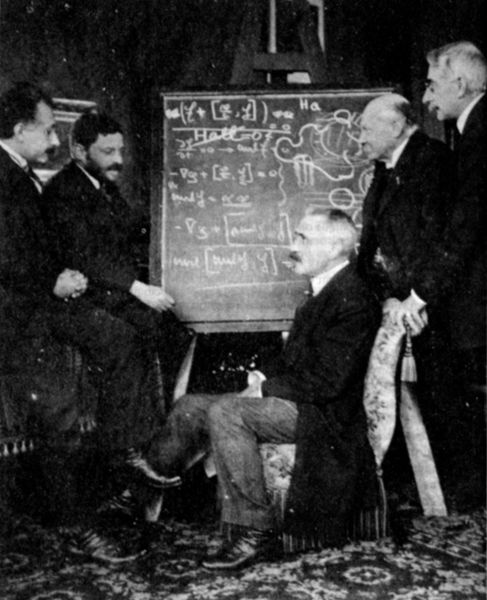<Back to Index>
- Physicist Paul Langevin, 1872
- Painter Édouard Manet, 1832
- President of the Indian National Congress Subhas Chandra Bose, 1897
PAGE SPONSOR


Paul Langevin (23 January 1872 – 19 December 1946) was a prominent French physicist who developed Langevin dynamics and the Langevin equation. He was one of the founders of the Comité de vigilance des intellectuels antifascistes, an antifascist organization created in the wake of the February 6, 1934 far right riots. Langevin was also president of the Human Rights League (LDH) from 1944 to 1946 — he had just recently joined the French Communist Party. He is buried at the Panthéon.
Langevin was born in Paris, and studied at the École de Physique et Chimie and the École Normale Supérieure. He then went to Cambridge University and studied in the Cavendish Laboratory under Sir J.J. Thomson. Langevin returned to the Sorbonne and obtained his Ph.D. from Pierre Curie in 1902. In 1904 he became professor of physics at the Collège de France. In 1926 he became director of the École de Physique et Chimie, where he had been educated. He was elected, in 1934, to the Académie des sciences.
Langevin is noted for his work on paramagnetism and diamagnetism, and devised the modern interpretation of this phenomenon in terms of spins of electrons within atoms. His most famous work was in the use of ultrasound using Pierre Curie's piezoelectric effect. During World War I, he began working on the use of these sounds to detect submarines through echo location. However the war was over by the time he had it operational. During his career, Paul Langevin also did much to spread the theory of relativity in France and created what is now called the twin paradox.
In 1910 he reportedly had an affair with the then widowed Marie Curie; today, their respective grandson and granddaughter are married to one another: Hélène Langevin-Joliot and Michel Langevin. He was also noted for being an outspoken opponent of Nazism, and was removed from his post by the Vichy government following the occupation of the country by Nazi Germany. He was later restored to his position in 1944. He died in Paris in 1946, two years after living to see the Liberation of Paris. He is buried near several other prominent French scientists in the Pantheon in Paris.
His daughter, Hélène Solomon-Langevin, was arrested for Resistance activity and survived several concentration camps. She was on the same convoy of female political prisoners as Marie-Claude Vaillant-Couturier and Charlotte Delbo.